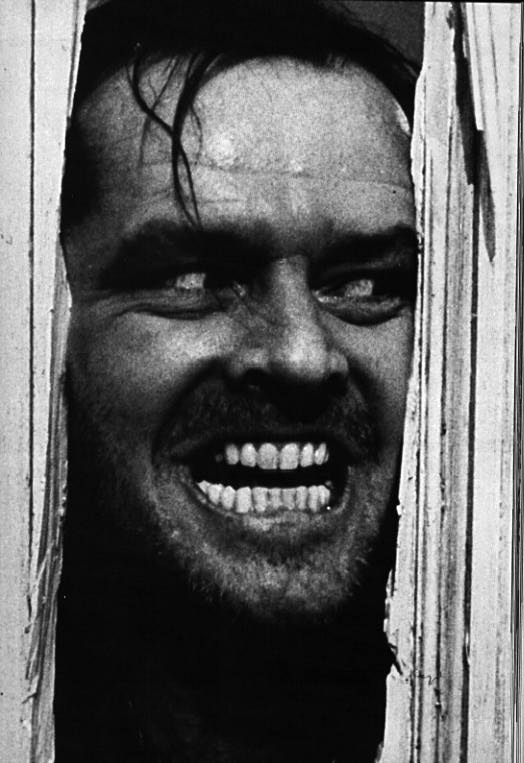Evolving Communication
Conventions
SOSC 4319 Theory and Practice
of Effective Communication
Demerits of Auteur Theory
A possible demerit is that
in creating a film like The Shining, Kubrick
strays from Stephen
King's inner vision
of how the film ought to be. This is a demerit in that through adaptation,
a film undergoes transformation to the point where original ideas
and artistic intentions get lost. For this reason, King was not
satisfied with Kubrick's creation, and had a more faithful adaptation
of The Shining created. Another possible
demerit to having a distinctive style is if the director style is
distinct simply because he is afraid to try anything new, "The
distinctive smell of skunks does not make their smell pleasant or
superior to the smell of roses" An example of a shot typical
of Kubrick is the partially obscured face. In fact it is one of
his most famous frames from The Shining; the shot of Jack's
partially obscured face, through the broken door that he had just
axed. The door frames his face, which emphasizes his evil grin and
squinting eyes. Ultimately this shot communicates his dire need
to get to the other side, to attain his goal of catching his wife.
Similarly in Eyes
Wide Shut, when the doctor goes back to the sex cult house
he is stopped at the gate, and given a note. After reading the note,
which demands that he stop pursuing what is beyond the gate, Kubrick
uses the same partially obscured shot of the doctor's face. His
face is framed by bars on the gate; it emphasizes the expression
on his face, which reveals his desire to go beyond the gate. Although
this may not entirely be because Kubrick is afraid to try new things,
it is a possible demerit in terms of auteur theory, since it is
quite typical. This cliche may have been included in the film because
after Kubrick's death, a new director took over. The partially obscure
face shot may have been the director's attempt to emulate Kubrick's
style.
vision
of how the film ought to be. This is a demerit in that through adaptation,
a film undergoes transformation to the point where original ideas
and artistic intentions get lost. For this reason, King was not
satisfied with Kubrick's creation, and had a more faithful adaptation
of The Shining created. Another possible
demerit to having a distinctive style is if the director style is
distinct simply because he is afraid to try anything new, "The
distinctive smell of skunks does not make their smell pleasant or
superior to the smell of roses" An example of a shot typical
of Kubrick is the partially obscured face. In fact it is one of
his most famous frames from The Shining; the shot of Jack's
partially obscured face, through the broken door that he had just
axed. The door frames his face, which emphasizes his evil grin and
squinting eyes. Ultimately this shot communicates his dire need
to get to the other side, to attain his goal of catching his wife.
Similarly in Eyes
Wide Shut, when the doctor goes back to the sex cult house
he is stopped at the gate, and given a note. After reading the note,
which demands that he stop pursuing what is beyond the gate, Kubrick
uses the same partially obscured shot of the doctor's face. His
face is framed by bars on the gate; it emphasizes the expression
on his face, which reveals his desire to go beyond the gate. Although
this may not entirely be because Kubrick is afraid to try new things,
it is a possible demerit in terms of auteur theory, since it is
quite typical. This cliche may have been included in the film because
after Kubrick's death, a new director took over. The partially obscure
face shot may have been the director's attempt to emulate Kubrick's
style.
Michelle Tirkalas

|
Disclaimer © 2003 - 2004 by class of SOSC 4319 at York University |